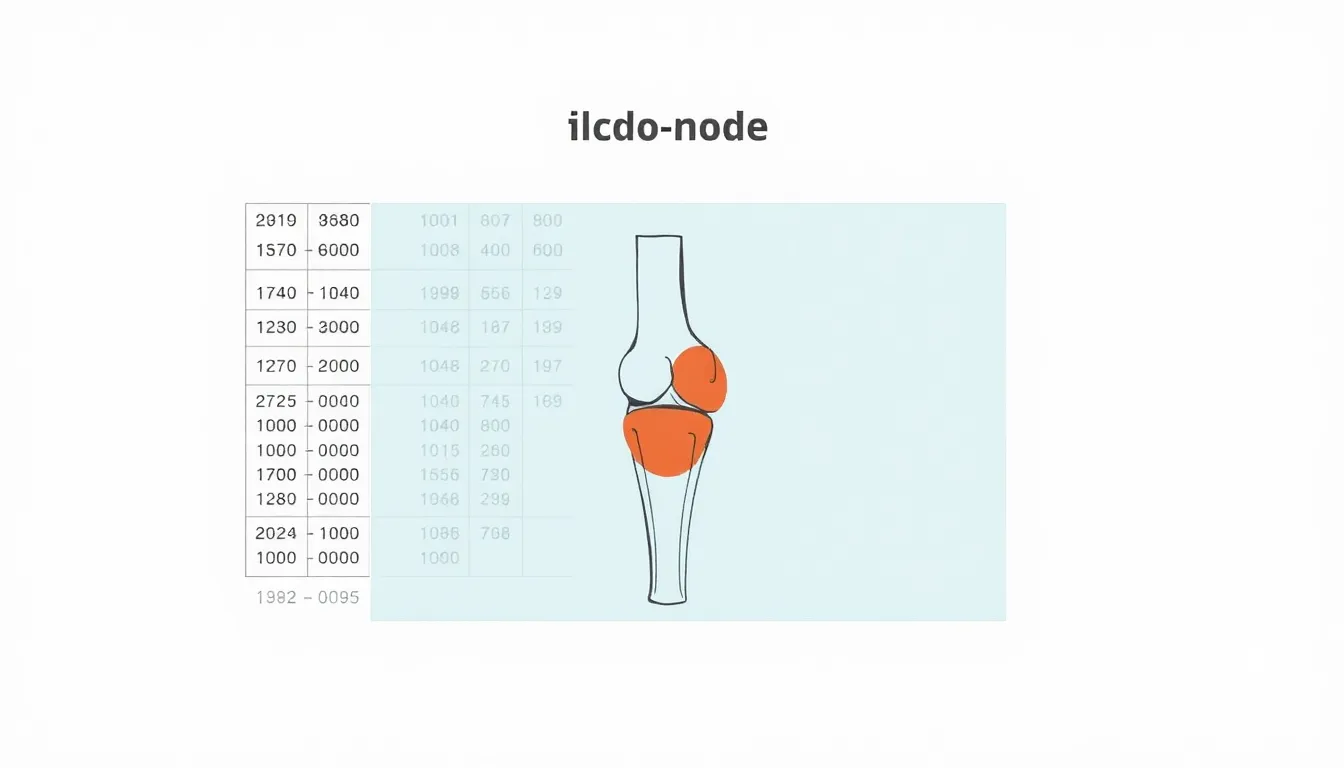Table of Contents
ToggleKnee injuries can feel like a bad joke—one minute you’re strutting your stuff, and the next, you’re sidelined with a right knee contusion. It’s like your knee decided to audition for a drama, complete with swelling and bruising. But don’t worry, this isn’t an Oscar-worthy performance; it’s just a common injury that many people face.
Overview of Right Knee Contusion
Right knee contusions occur from direct trauma to the knee area. These injuries result in bruising and swelling, often requiring prompt attention.
Definition of Right Knee Contusion
A right knee contusion is a bruise that develops when blood vessels are damaged due to impact. Symptoms include pain, swelling, and discoloration. The injury typically stems from falls, collisions, or direct blows during sports or daily activities. While symptoms can vary in severity, timely evaluation aids in proper management and healing.
Importance of ICD-10 Coding
ICD-10 coding plays a crucial role in identifying right knee contusions for accurate medical documentation. This coding system ensures consistency in diagnosis and treatment across healthcare settings. Healthcare providers use codes to capture necessary data for billing as well as tracking health outcomes. Accurate coding contributes to patient care and allows for effective healthcare planning and resource allocation.
Understanding ICD-10 Classification

ICD-10 classification plays a vital role in accurately documenting medical conditions. This system categorizes diseases and related health issues, facilitating effective healthcare delivery and management.
Structure of ICD-10 Codes
ICD-10 codes consist of a letter followed by up to six characters. A letter represents the category of the condition, while subsequent characters detail the specific nature of the injury. Codes may include additional digits that signify laterality, extension, or severity. For instance, the code structure allows healthcare providers to quickly identify and understand the diagnosis. Each section of the code corresponds to various aspects of the health condition, ensuring thorough documentation. This structured format enhances the consistency of medical records, making it easier for professionals to communicate effectively about patient care.
Specific Code for Right Knee Contusion
For right knee contusion, the specific ICD-10 code is S80.01. This code identifies contusions of the right knee and includes various extensions for more detailed documentation. Healthcare providers use this code to report injuries caused by trauma, ensuring accurate tracking of the injury’s nature and treatment. The precise coding supports efficient billing processes and reflects the patient’s condition accurately in medical records. Using S80.01 allows medical professionals to follow guidelines for coding that align with best practices in healthcare, fostering better outcomes in patient care and resource utilization.
Symptoms and Diagnosis
Right knee contusions present with distinct symptoms that assist in identifying the injury. Recognizing these signs promptly improves recovery outcomes.
Common Symptoms of Right Knee Contusion
Pain often becomes immediate following the trauma, leading to discomfort when moving or applying pressure. Swelling typically develops within hours, indicating inflammation in the injured area. Discoloration emerges, revealing shades from red to purple; this occurs due to blood pooling under the skin. Bruising may vary in severity and extent but usually correlates with the impact force. Limited range of motion can hinder daily activities, as individuals find it difficult to bend or straighten the knee fully.
Diagnostic Methods for Evaluation
Healthcare providers utilize various diagnostic methods to evaluate right knee contusions accurately. A physical examination is essential, where practitioners assess swelling, tenderness, and range of motion. Imaging techniques like X-rays may be employed to rule out fractures or other underlying injuries. MRI scans serve well for more detailed views, showing soft tissue damage or bleeding within the knee joint. Additionally, patient history regarding the mechanism of injury provides context that helps guide the diagnostic process.
Treatment Options
Various treatment options exist for managing right knee contusions. Immediate and appropriate care can enhance healing and reduce complications.
Conservative Treatment Approaches
Resting the affected knee is essential. Ice application helps minimize swelling and alleviate pain. Compression through bandages provides support and stability; elevation aids in fluid drainage. Over-the-counter pain relief, like ibuprofen or acetaminophen, can manage discomfort. Lastly, rehabilitation exercises promote range of motion and strengthen the surrounding muscles once acute symptoms subside. These methods often suffice for mild to moderate contusions, leading to recovery without invasive procedures.
Surgical Intervention
Surgical options may become necessary for severe knee contusions involving significant damage to surrounding structures. In cases of extensive blood vessel injury or associated fractures, operative management might involve procedures to repair tissues. Surgeons can assess the extent of damage through imaging and physical examination, tailoring interventions accordingly. Recovery from surgery often includes physical therapy, which supports healing and functional restoration. This approach emphasizes the importance of careful evaluation before deciding on surgical options.
Complications and Prognosis
Right knee contusions can lead to various complications if not managed properly. Swelling may persist, causing discomfort and affecting mobility. Inflammation could result in bursitis, which involves painful swelling of the fluid-filled sacs around the knee. Persistent pain might indicate potential underlying damage to ligaments or cartilage, warranting further investigation. Joint stiffness commonly occurs post-injury, limiting range of motion and leading to difficulties in daily activities. Additionally, untreated contusions can develop into chronic conditions, causing long-term issues.
Potential Complications from Right Knee Contusion
Long-term complications may arise from right knee contusions, especially without appropriate intervention. Delayed treatment often results in persistent knee pain. Ongoing swelling can lead to cartilage degeneration over time. In some cases, an untreated contusion may progress into a more serious joint injury. These complications can also affect athletic performance and physical activities. If complications arise, healthcare providers recommend early intervention to prevent worsening symptoms.
Expected Recovery Time
Recovery time for right knee contusions varies significantly based on injury severity. Mild contusions often heal within 1 to 2 weeks, with appropriate rest and care. Moderate injuries frequently require 3 to 6 weeks for full recovery. Severe contusions, especially those with ligament damage, may take several months. Factors like age, overall health, and adherence to rehabilitation significantly influence recovery speed. Doctors typically suggest monitoring symptoms closely and adjusting activity levels to ensure timely healing.
Right knee contusions are common injuries that can disrupt daily activities and athletic performance. Understanding the symptoms and the importance of timely evaluation is essential for effective management. Proper documentation using the ICD-10 code S80.01 ensures accurate reporting and treatment planning.
With appropriate care, most individuals can expect a full recovery. However, awareness of potential complications emphasizes the need for careful monitoring and rehabilitation. By recognizing the signs early and seeking medical attention, individuals can navigate their recovery journey more effectively and return to their normal routines.







